Караджов камък
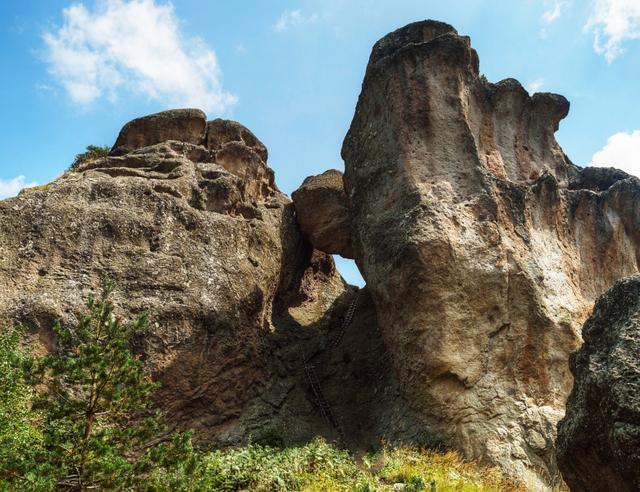 Скалният феномен Караджов камък е един от върховете на известната
енергийна триада Кръстова гора- Белинташ- Караджов камък. Представлява
високо плато с надморска височина 1448м. Интересното и загадъчно при
него е, че в процепа между две скали е заклещена канара с височина към
18м. Точно под големия камък има поставена дървена стълба, а покрай
нея-метален парапет. На места стълбата прекъсва и придвижването става
по самата скала. Това е и единственият път до върха, като местните го
наричат Боаза(процеп).
Скалният феномен Караджов камък е един от върховете на известната
енергийна триада Кръстова гора- Белинташ- Караджов камък. Представлява
високо плато с надморска височина 1448м. Интересното и загадъчно при
него е, че в процепа между две скали е заклещена канара с височина към
18м. Точно под големия камък има поставена дървена стълба, а покрай
нея-метален парапет. На места стълбата прекъсва и придвижването става
по самата скала. Това е и единственият път до върха, като местните го
наричат Боаза(процеп).
Караджов камък се намира в близост до село Мостово и Кръстова гора. До него се достига по-два най-често предпочитани маршрута, като по- бърз и „лек“ е от Кръстова гора. Приятна разходка в гората за около 3 часа (отиване и връщане) разстояние към 6км. в едната посока. Няма да съжалявате защото след като стигнете гледката ще Ви остави без думи.
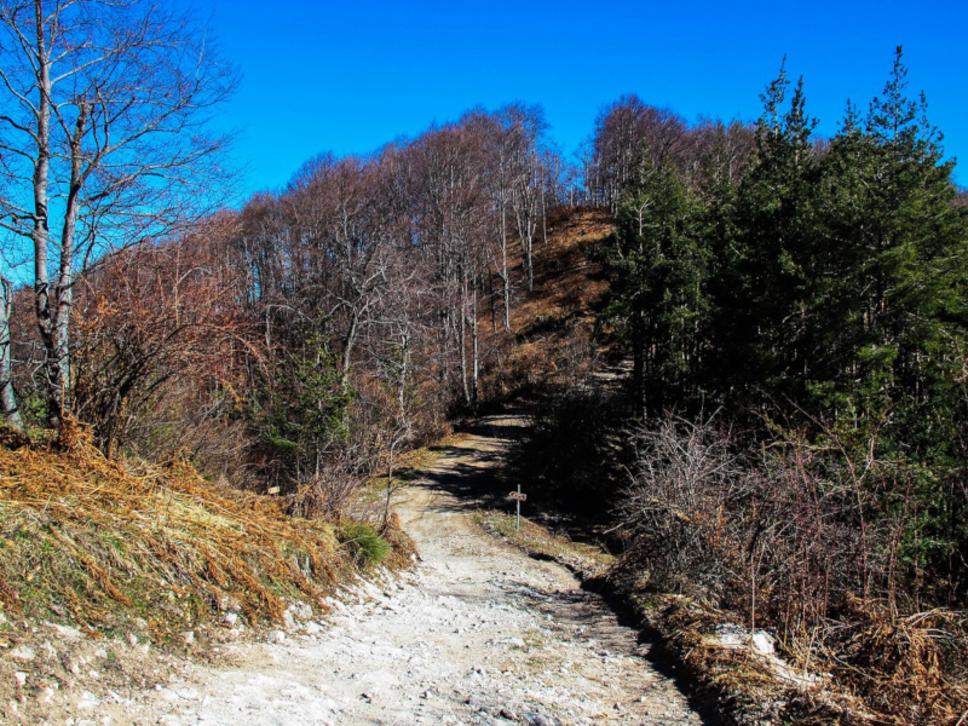 От Кръстова гора тръгвате в посока пътя за „Очното аязмо“, на разклона
продължавате направо към хижа „Свобода“, има добре маркирана
пътека, от която трудно може да се отклоните или заблудите и да
поемете в друга посока.
От Кръстова гора тръгвате в посока пътя за „Очното аязмо“, на разклона
продължавате направо към хижа „Свобода“, има добре маркирана
пътека, от която трудно може да се отклоните или заблудите и да
поемете в друга посока.
Историята на Светилището
Караджов камък предизвиква интереса на археолозите от много години, но едва 2004 година са направени проучвания на местността от екипа на д-р Иван Христов (НАИМ БАН).
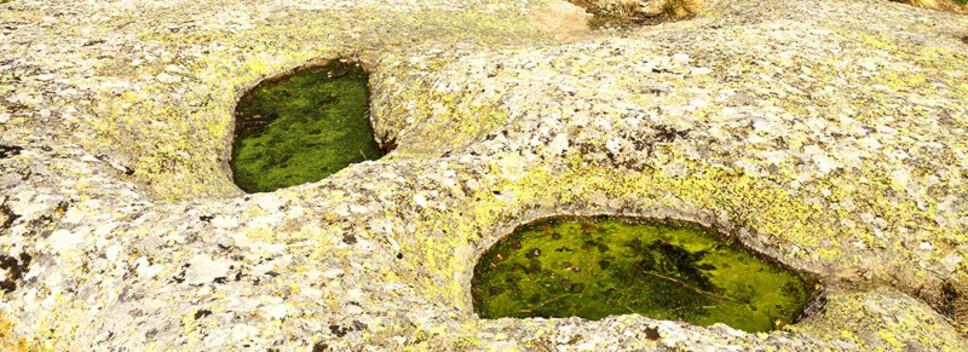 Археологът д-р Иван Христов прави няколко сондажа в ниското на платото
и открива множество фрагменти керамика, които датират от VIII – VI
в.пр.Хр. Тази датировка съвпада с присъствието на траките в тази
местност и светилището се свързва с тракийското племе Беси, които
са обитавали тази част на Родопите по това време. Доколкото има
сведения се знае, че когато някой тракиец загине, близките му
издълбавали ниши и дупки в скалите, пълнели ги с дарове и по този
начин ги принасяли в жертва към боговете.
Археологът д-р Иван Христов прави няколко сондажа в ниското на платото
и открива множество фрагменти керамика, които датират от VIII – VI
в.пр.Хр. Тази датировка съвпада с присъствието на траките в тази
местност и светилището се свързва с тракийското племе Беси, които
са обитавали тази част на Родопите по това време. Доколкото има
сведения се знае, че когато някой тракиец загине, близките му
издълбавали ниши и дупки в скалите, пълнели ги с дарове и по този
начин ги принасяли в жертва към боговете.
Ще Ви привлекат вниманието ямите издълбани в скалата при изкачването до върха и. Това според археолозите са ритуалните ями, в които са поставяни даровете за починали тракийци.
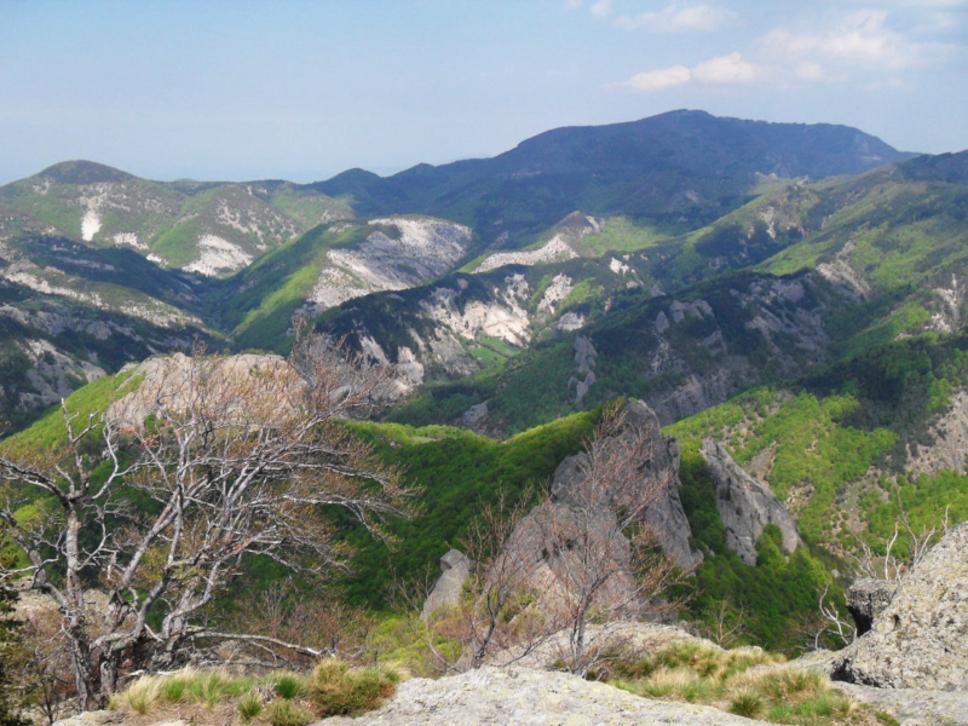 На върха също могат да се забележат ями разпръснати по протежението
на цялата скала. Друга теория за тези ями е че в тях са се
извършвали жертвоприношения и улеите са се използвали за изтичане
на кръвта на жертвеното животно, по която се гадаело и се
предсказвали важни моменти от живота и военното дело на племето.
На върха също могат да се забележат ями разпръснати по протежението
на цялата скала. Друга теория за тези ями е че в тях са се
извършвали жертвоприношения и улеите са се използвали за изтичане
на кръвта на жертвеното животно, по която се гадаело и се
предсказвали важни моменти от живота и военното дело на племето.
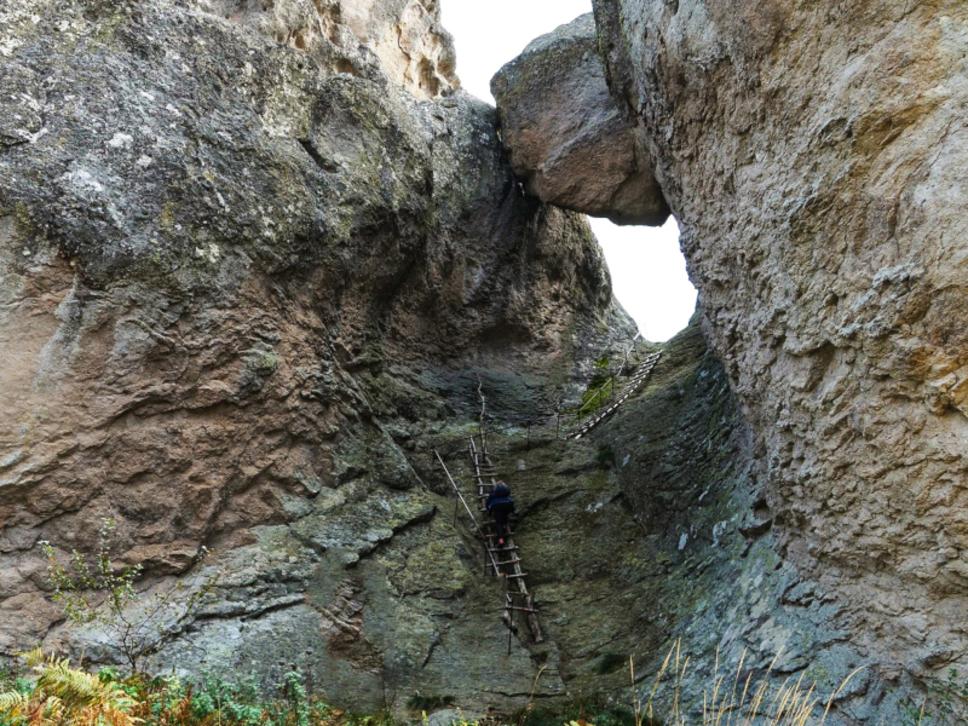 В няколко народни предания се разказва за Караджов камък. Според едно от
тях Караджа войвода от Асеновградското село Яврово пазел население
от нашествията на турците и редовния башибозук. След зверското
убийство на местна девойка, Караджа войвода нападнал и избил 25
турци османлии, като оставил само един, който завел и предал на
валията в Пловдив с думите, че българите от Станимашко няма да
търпят повече зверства и издевателства. Валията се разгневил и
изпратил войска, която обградила войводата и го убили на
едноименния скален феномен, носещ името Караджов камък от тогава.
В няколко народни предания се разказва за Караджов камък. Според едно от
тях Караджа войвода от Асеновградското село Яврово пазел население
от нашествията на турците и редовния башибозук. След зверското
убийство на местна девойка, Караджа войвода нападнал и избил 25
турци османлии, като оставил само един, който завел и предал на
валията в Пловдив с думите, че българите от Станимашко няма да
търпят повече зверства и издевателства. Валията се разгневил и
изпратил войска, която обградила войводата и го убили на
едноименния скален феномен, носещ името Караджов камък от тогава.
Друга легенда разказва, че преди да умре Караджа войвода заровил някъде под камъка голямо съкровище.
Интересно е мнението на местните жители за мястото. Те избягват да говорят за Караджов Камък, тъй като вярват, че платото и скалата носят лоша енергия и поради слуховете за заровени съкровища.

